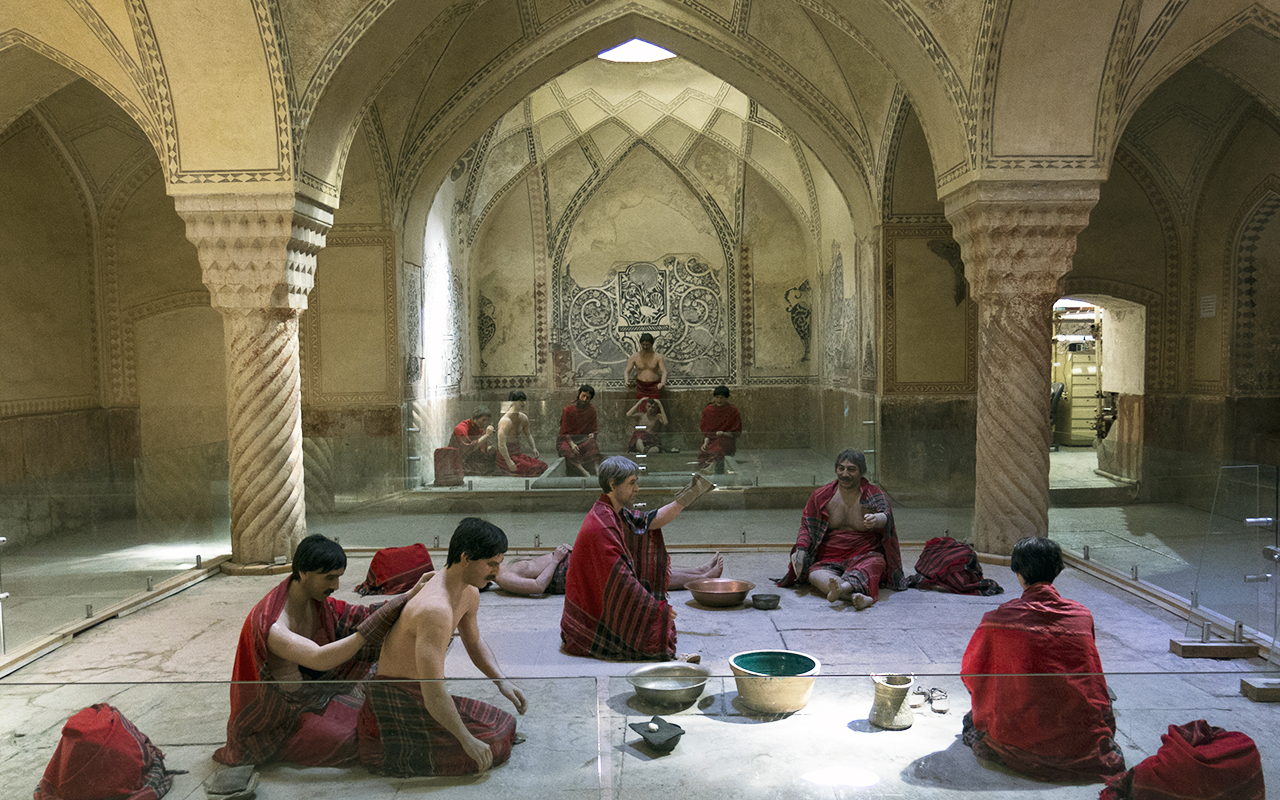Vakil Bathhouse is one of Shiraz’s main attractions, located side by side to the Vakil Bazaar. it was built during the 18th century, which was the prime of the Zandieh dynasty. Vakil Bathhouse has gone through much, but still, after three hundred years, it is one of the Must-See of Shiraz City. Also, there’s a museum of Anthropology available there, exhibiting the lifestyle of local people during the 18th century.
So, if you are planning to Travel to Iran, Follow Iran Travel Guide Center article to learn more about Vakil Bathhouse in Shiraz City:
Accessibility: To get to Vakil Bathhouse you can take Shiraz Metro and get off at Zandieh station. Then you are just five minutes’ walk away from this place.
Or if you are planning to take the bus you can get off at Shahrdari station which is just behind the Arg of Karimkhan and another couple of steps will get you to your destination.
Open days and hours: Vakil Bathhouse is open every day from 8 a.m. to 5 p.m.
Phone number: +98 71 3224 7646
Ticket price: 500.000 RLS

Bathhouse of Vakil, Shiraz
If the reason for your travel to Iran is to get a better sight of the culture, Vakil Bathhouse can provide you with that efficiently. This Bathhouse was a marvel in design and architecture when it was first established, and it is still one of the most precious relics of Shiraz city.
It is located at the heart of the historical district in Shiraz City, which makes this place convenient to access.
Bathing and Socializing at Vakil Bathhouse
In the bygone days, the act of bathing transcended mere cleanliness; it served as a platform for social interaction and lengthy conversations. In Iran, it is customary for strangers to easily engage in conversations, sharing insights into their lives.
Within traditional bathhouses like the Vakil Bath in Shiraz, alongside bathing and Persian massages, various rituals unfolded. These included “Hanabandan,” a pre-marriage ceremony elaborated upon in Iranian wedding traditions. Moreover, “Cheleh,” a ritual involving bathing infants, was a customary practice within these enigmatic bathhouses. It’s worth noting that many mothers found suitable brides for their sons in these unique social settings.
Renowned Bathhouse Rituals
– Hanabandan and Cheleh
Hanabandan Ceremony: Within the Vakil Bath in Shiraz, the Hanabandan ritual unfolds as a venerable tradition. This ceremony is accompanied by the melodious strains of “Vasoonak” music, its lyrical content often expressing sentiments of love and well-wishing.
During this ceremony, the bride is led to the shower or the bath’s inner sanctum, where she is tenderly washed. Subsequently, she is seated on the bathhouse floor, with a piece of rock candy placed at her feet. The “Dalak,” who serves as the masseur, enters and begins applying henna to the bride’s hands and feet. As henna is intricately adorned on her hands, a group of women gathers around the bride, harmoniously serenading her with a special rendition of “Vasoonak.”
– The “Mother and Baby Bathing” Tradition
Another significant custom known as “Cheleh” takes place on the 40th day after a baby’s birth. During this ritual, the baby is initially bathed by a caregiver using cedar and water. Subsequently, the infant is held above the mother’s head, and a bowl called the “forty keys” is employed to rinse the child. This special bowl is engraved with forty names representing the divine names of God.”
Vakil Bathhouse Design
The Bathhouse, a masterpiece crafted by skilled architects and craftsmen in the 1700s, boasts a unique design with separate entrance doors connected by a short corridor, strategically designed to retain heat and block cold breezes.




No comment